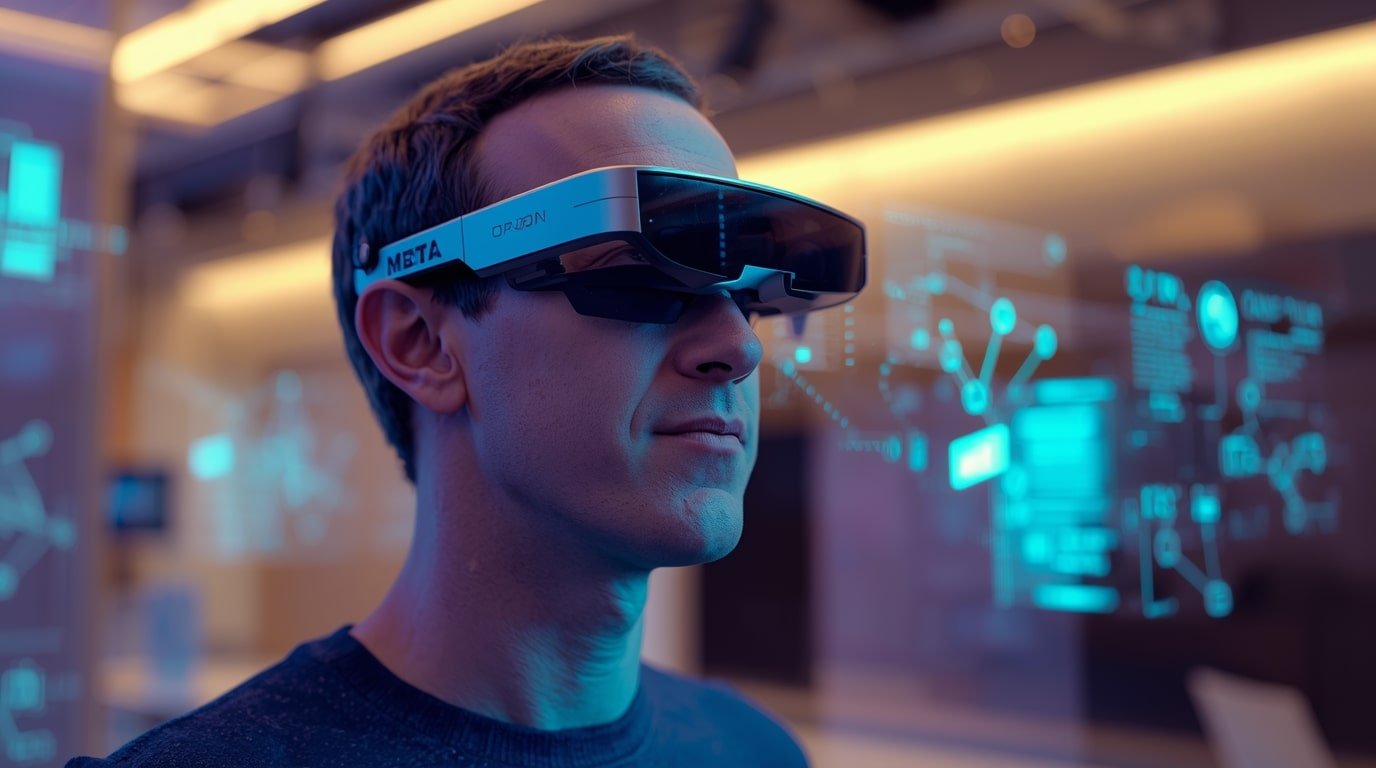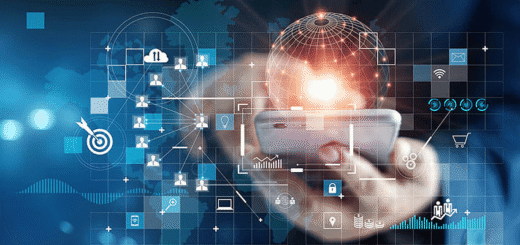Meta’s Orion AR Glasses Revolutionize Wearables as iPhone 17 Sales Soar Amid Charging Controversy

Meta presented practical prototypes of its long-awaited Orion smart glasses at a September 21, 2025, event in Palo Alto, in a spectacular showing of the imminent mainstream introduction of augmented reality. Its smooth, lightweight glasses, which are thinner than two Ray-Bans, suggest placing holographic surfaces on top of the physical world, and transform your daily interpersonal communication into a virtual phone call.
With the expected attendees spell-bound by notification notification, flitting on mid-air, the release highlighted the aggressive shift of Meta toward the wearable AI, making the company a leader in a market that is expected to reach a market value of half a trillion by 2030.
The Orion prototype is running on a custom Qualcomm Snapdragon XR3 chip and is compatible with the Meta ecosystem, such as WhatsApp, where users can make holographic video calls, and Instagram, which allows users to edit in AR to enhance photos.
The glasses were put on by the CEO Mark Zuckerberg who uses them in his keynote, he showed how well the glasses can instantly recognize objects: when he points to a cup of coffee, nutritional breakdowns and recipes are projected onto the object, and it becomes a part of his field of view.
This is not merely tech, it is the new platform of human interaction, Zuckerberg proclaimed, pointing to privacy measures, such as processing data on the device, to placate those who want it all. Orion, estimated to cost $499, is set for a consumer release in 2027 and has the potential to democratise AR, posing a threat to the Apple Vision Pro and potentially undoing the stalemate of Project Astra at Google.
This is being unveiled as a part of larger wearable trends in which the Ray-Ban partnership with Meta has already shipped more than 1 million units in 2021. Initial testers at the event, such as Unity and Adobe developers, were positive about the five-hour battery life and 50-degree field of view of the glasses, but said that there was slight latency in dark environments.
Gartner analysts believe that with the entry of enterprise applications in logistics and training, Orion may reach 20 per cent of the AR market in two years. However, regulatory challenges are on the horizon: the AI Act in the EU requires stringent safety inspections, and U.S. politicians cast their gaze toward an antitrust investigation of the data moat of Meta.
Charging Shake-Up: iPhone 17 Pro Demands New Accessories for Peak Speeds
Meta strived to push the limit in the world of wearables, and Apple sparked a wildfire in the smartphone industry with the launch of the iPhone 17 line on September 21, 2025. Although the pre-orders made history, notching over 50 million in the first 24 hours despite a slow economy, the Pro model, with its scorching 120W wired charging feature, has customers in a frenzy to upgrade.
According to TechRadar, to do so, a new proprietary charger is required, which renders older MagSafe and USB-C cables obsolete and sparks controversy about the practice of intended obsolescence. iPhone 17, which was launched in Moscow with much hype, features the latest A19 Bionic chip with a built-in neural engine to perform AI functions on board, such as sophisticated photo editing and instant language translation.
The base models cost as low as $799, and the Pro Max costs as high as $1,499, with a rumoured under-display camera to ensure a smooth Face ID. Sales are soaring in emerging markets, where Apple’s ecosystem lock-in overcomes competitors, such as the Samsung Galaxy S26.
The charging discovery, however, has not gone down well: the new 120 W charger, which is sold separately and costs 79 dollars, is able to charge up to full in less than 20 minutes, whereas legacy accessories are only able to charge up to 65W, and then it takes up to 45 minutes.
Consumer interest groups such as Public Citizen dubbed it a blatant cash grab and asked regulators to investigate compatibility standards. In a CNBC interview, the head of Apple, Tim Cook, responded by insisting that the upgrade is a sustainable innovation, because it optimises gallium nitride technology that is less heat and energy wasteful.
Nevertheless, third-party manufacturers such as Anker and Belkin declared hasty compatibility packages with shortages propagating all over Best Buy and Amazon. In China, where the Huawei Mate 70 leads in battery life, the scandal may harm the 25% market share of Apple in particular, since the tariffs are imminent during the Trump administration.
The Thought-to-Text Milestone of Neuralink Makes Ethical Headlines
Moving past screens to synapses, Elon Musk’s Neuralink caused a stir with an update on a clinical trial that revealed the first patient could type 100 words per minute solely with the use of brain signals. On September 21, it was announced through X how the implantable chip, which has been improved to include 1,024 electrodes, reads neural impulses and allows users who are paralysed to input text smoothly, surpassing the capabilities of traditional keyboards.
Musk used the Twitter hashtag Telepathy is here, as a hint to a broader range of uses, from gaming to telepathic communication. In a pre-recorded video, the patient, a 32-year-old quadriplegic who is a Texas resident, said it was like mind-reading magic because he could easily type emails and scroll social media.
The FDA-approved trial that is expanded to 20 participants by Neuralink is the continuation of the primitive cursor control of the previous year, with the results indicating that 95 per cent of the intent prediction was correct.
Shareholders celebrated, and the valuation of the company increased to 15 billion dollars, although bioethicists sounded warning bells due to the long-term problems associated with the use of electrodes, such as their degradation and loss of data privacy. Even the Vatican chimed in and urged against human enhancement in the name of soulful protection.
The breakthrough is reverberating around the world in ageing societies such as Japan, where Mitsubishi UFJ Financials is researching the use of Neuralink in older banking interfaces. Rival companies such as Synchron, which took a less invasive stent-based approach, rushed trials in retaliation, and BlackRock Neurotech was sued on patent overlaps. Since Musk aims to introduce consumer versions by 2028, the technology may transform access, provided that issues of equity, such as the affordability of non-trial users, are addressed.
Broader Horizons: AMD’s AI Powerhouse and Samsung’s Smart Home Vision
The new things that happened on the day went past the headliners. During the virtual finale of Computex 2025, AMD marketed its Ryzen AI 400 series as an AI powerhouse and offered 50 TOPS of neural processing in laptops that would compete with discrete GPUs on offer by Nvidia.
The chips cost less than 1000 dollars and are aimed at creators and gamers, and initial tests have demonstrated 30 per cent improvement in speed in Adobe Suite. CEO Lisa Su bragged about the open-source spirit of the lineup, which is a closed ecosystem at Nvidia and could undermine its 80 per cent monopoly in AI hardware.
Samsung also doubled its connected living efforts at the IFA 2025 events with its scheme to launch Future Living Now: AI Home. Incorporating the SmartThings platform with the Bixby AI, the platform automates programs such as automatic grocery ordering using fridge cameras and energy optimisation using EV charging.
The ecosystem, which is on display in Berlin, is favourable to Matter standards in cross-brand compatibility, targets 40 per cent of the smart home market, worth $150 billion, by 2027. Privacy settings, such as end-to-end encryption, cover the GDPR compliance, but there are doubts about data silos.
The markets responded in a bullish way: Meta stock shot up 4.2 per cent to $620 on AR hype, and Apple shares fell 1.1 per cent on charging complaints and recovered on sales news. Nasdaq futures had been indicating a green open, with ETFs tracking AI and trading up 2.5, such as BOTZ.
By the time September 21 is over, these advances will create a technology canvas of aspiration and frustration- glasses with superhuman vision, phones recharged within seconds, and mind-reading text. However, behind the glow, there is an issue of access, morality and sustainability. The leaps that will bring us together or divide us? The code is written, and the human factor is the final debug.


